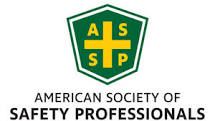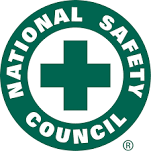Talking About OSHA’s Hazard Communication Standard
One day a young man named Bill came by the offices of a cleaning and restoration contractor to apply for work. Tom, the general manager, was impressed with Bill’s carpet cleaning experience, and was glad to get his application. Bill said he didn’t have time to complete the application on the spot and asked if he could fill it out at home and bring it in later. They scheduled a full interview for the following morning. At the interview, Bill answered all the questions, demonstrating that he had sufficient knowledge to qualify for a position.
Tom assigned him to work with the lead technician for two or three weeks to get on-the-job (OTJ) training. The reports back from the lead tech were positive – enough to put Bill on his own. Customers were delighted with Bill’s performance, overlooking the fact that he may have shown up a little late; but they praised him for his “great work.” Tom had one criticism, though, which was Bill’s productivity: If he was given a work order of four jobs, he might only complete two or three in a day.
During a temporary work slowdown, Tom sent his lead tech out on his own without a helper and assigned Bill to the office so he could see how successful the OTJ training had been. Tom and Bill met in the office and went back to the stockroom. Tom asked Bill to tell him what traffic lane cleaner was used for and what the dilution rate was. Bill picked up a bottle and held it in front of him for a long moment, all the while moving his lips slightly. Bill got it half right and missed the dilution ratio. Then Tom handed Bill a bottle of browning treatment and asked him what it was used for. Before he could be stopped, Bill opened the bottle and sniffed it. With his sinuses suddenly burned from the vapors, he abruptly dropped the bottle and ran to the bathroom to flush his sinuses out. Bill came out of the bathroom with his eyes watering, nose running and in obvious discomfort.
Afterwards, Tom asked Bill the obvious question: “Can you read?” He claimed that he could, but “not too well.” Tom asked him about his high school education and Bill produced a laminated miniature of his diploma out of his wallet. Bill had been able to perform the correct steps in the spotting process based on memorizing what he had seen others do; but when presented with an unfamiliar label, his only recourse was his sense of smell. Even though Bill had graduated from a public high school, it was doubtful that he could even read at a 5th grade level. After further discussion, it was discovered that the application received weeks earlier had actually been filled out by Bill’s wife.
poison
Because Bill’s field performance was so good, Tom decided to keep him on the payroll, but only working under direct supervision. Tom went a step further and arranged for Bill to attend a remedial reading class, even allowing him to attend class while on the clock. But Bill never showed up for the first class, and never came back to work again.
This is an unfortunate story for the employee. He was a responsible person who cared about doing a good job for his customers. What employer doesn’t want people like that on his team? But it’s also unfortunate for the company, which learned that its hiring and training practices were inadequate… at least in this case.
You don’t know what you don’t know, so sometimes experience is the only teacher. Does Tom now make sure that every prospective employee can read before making a hiring decision? One would think so. But before that experience with Bill, why would he have thought about making sure that a job applicant isn’t functionally illiterate? What other possible negatives are you supposed to anticipate? This is why OSHA regulations are so dogmatic and absolute – they have to cover the unanticipated exceptions to the rule.
And that’s why OSHA’s Hazard Communication Standard (29 CFR 1910.1200) requires every employer to translate the information contained on the MSDS into any understandable format (which would have been the spoken word with Bill); and that employees are trained about the hazards they’re exposed to in the workplace… before they’re exposed.
In the case of browning treatment, the hazard identification for inhalation is, “May cause irritation of the upper respiratory tract,” and the risk level is low. But what if it had been a highly toxic substance that Bill had sniffed? Inhaled substances enter the blood stream by way of the lungs, and can have damaging effects on the liver, the kidneys or other organs. Acute effects are an obvious danger of course, but almost any substance is toxic at some concentration or dosage; so even lower doses of a moderately hazardous substance can be problematic if repeated exposure occurs over long periods of time. Hazardous substances aren’t just found in drums with diamond-shaped symbols – they include paints, solvents, fuels and even dust.
This is why every employer must establish a written hazard communication program (HazCom) in all workplaces where their employees are exposed to hazardous chemicals. A HazCom program must include a list of all hazardous chemicals that are present in the workplace, the person who’s responsible for the program, where written information about safe handling procedures can be found, and a description of requirements and information about labels, MSDS’s and employee training. Does your company have this?






